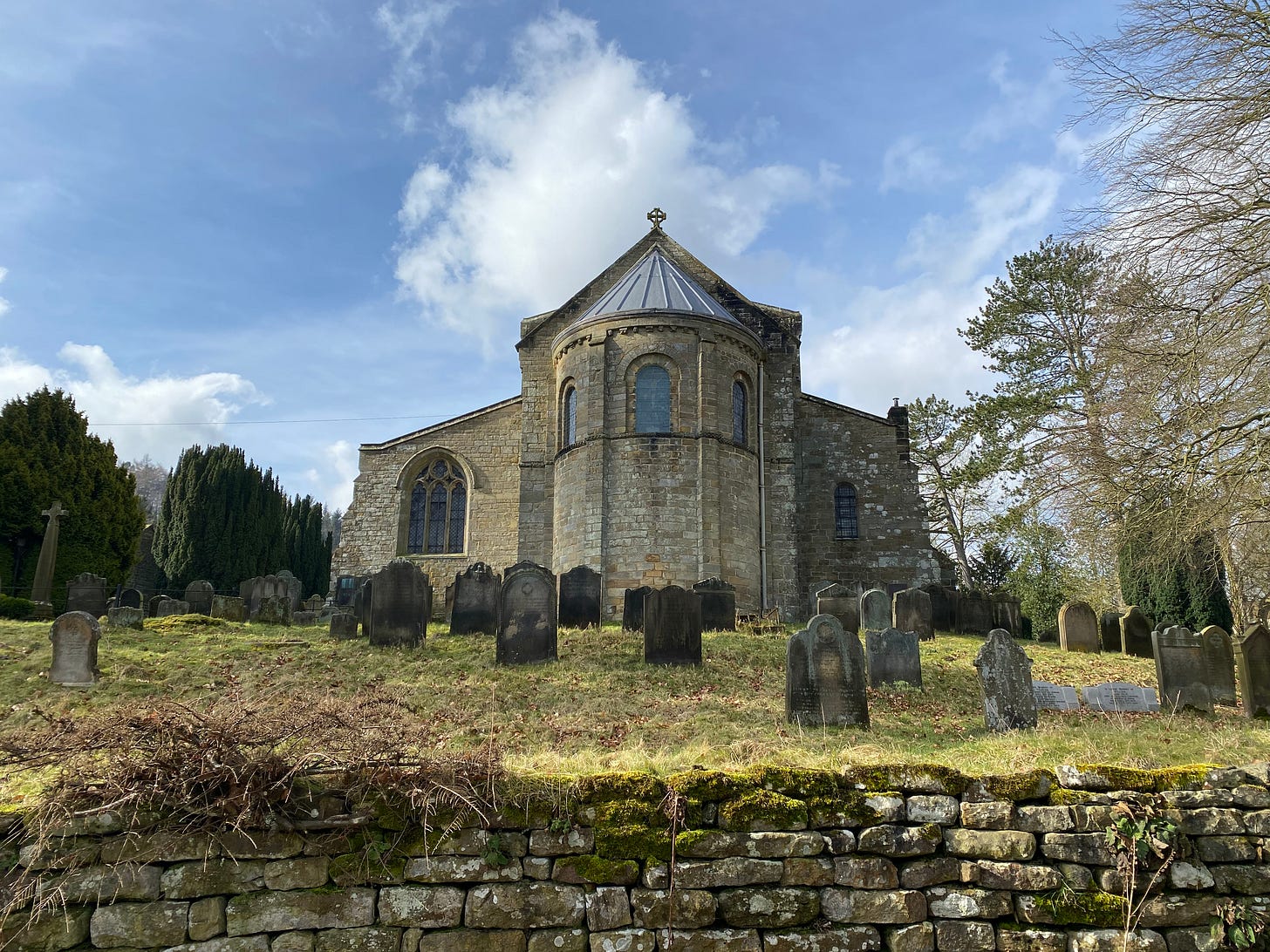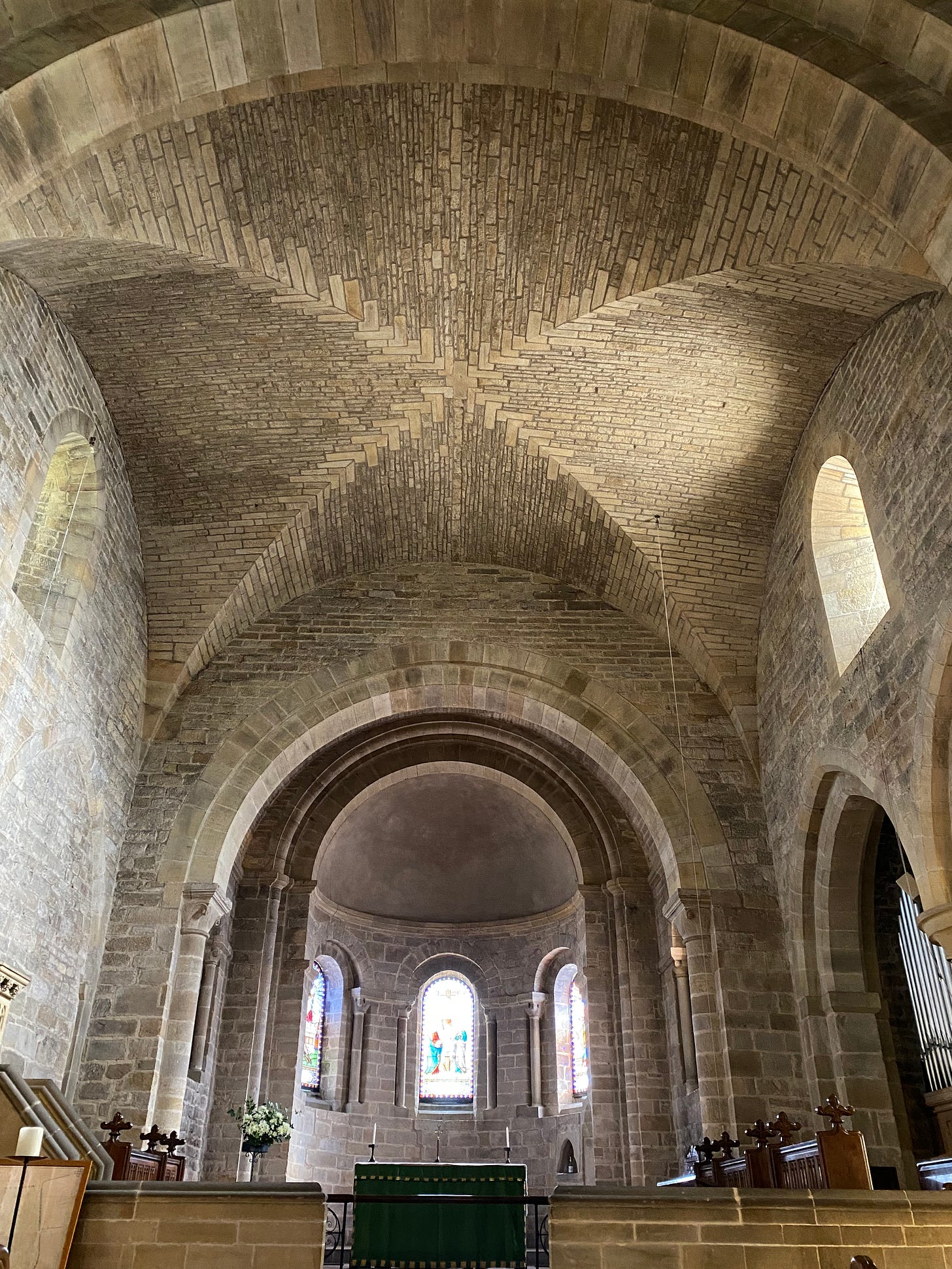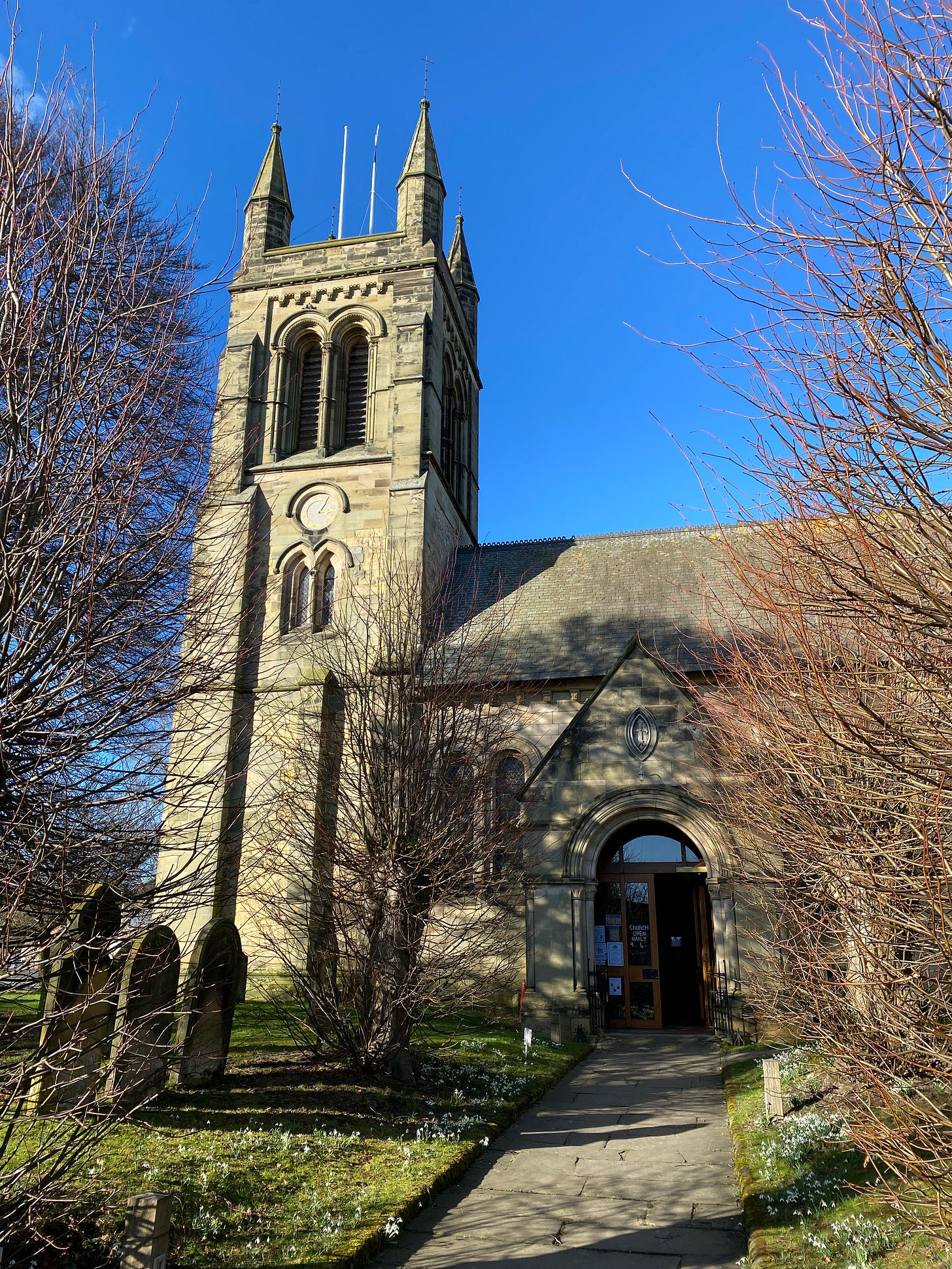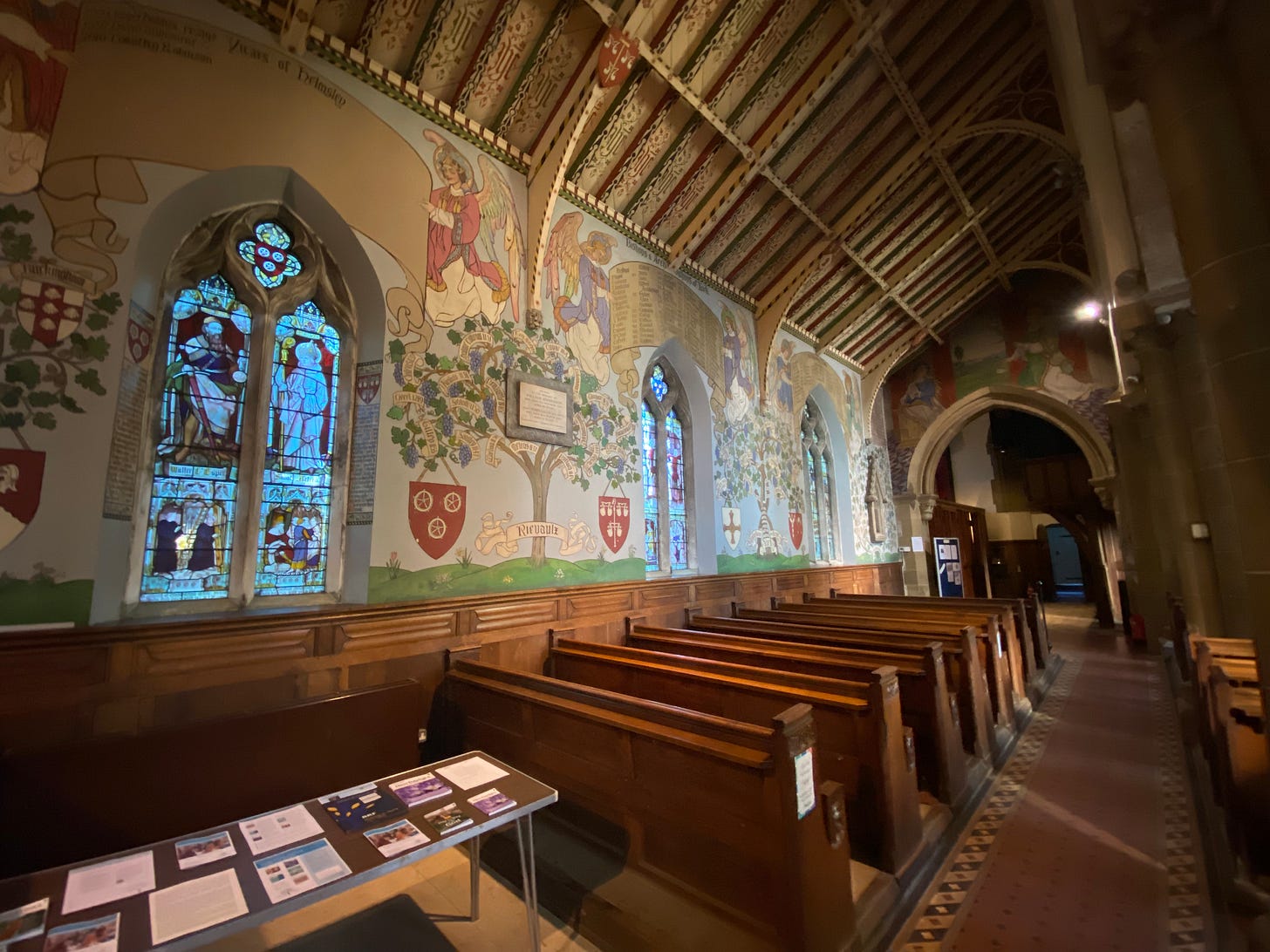The North York Moors: a land of wide open valleys and moorland hill tops covered in a vast expanse of heather spreading out into the horizon. This expanse undergoes one of the most dramatic and spectacular seasonal transformation anywhere in the UK; a spectacle worth travelling miles to see. In the winter and early spring, the heather, burnt mahogany in colour, appears rather lifeless. However, latent within its buds is a rich explosion of riotous colour waiting to be unleashed. Come the summer and early autumn, one is presented with a sea of mauve and pink bell-shaped flowers as far as the eye can see. Utterly magnificent!
Though the moorland ecology and the grouse hunting culture of the Moors is worthy of an article here on The Village Green, that will have to wait. There is something else which this landscape has a wealth of: spectacular churches. It is these buildings, all of which are expressions of their unique local places, which I want to give you a little tour of today.
There were many churches that I could have included, but I will focus on the five that I deemed to be the most interesting and beautiful — as well as being churches which I could venture inside. Sadly, a number of churches in the Moors presented this curious onlooker with a locked and bolted door.
So let’s begin our tour. There is so much to marvel at and explore.
St Mary, Lastingham
Tucked away in a little wooded valley hollow is the village of Lastingham, a sleepy village off the beaten trail. Such a small village though is blessed with an incredibly impressive church — a fact that betrays this village’s importance in early English church history. Though the outside is interesting with a variety of geometric styles, the real treasure is found inside, or more accurately, underground.
Inside, one is immediately struck by the architectural style. A mixture of Norman and Perpendicular styles complement each other perfectly to provide a spectacle reminiscent of prestigious cathedrals, but here adorning a rather humble village’s church. Needless to say, the acoustics were phenomenal. But as grand as the architecture is, the real treasure of which church is renowned for is underneath one’s feet…
Descending down the steps we enter into a Norman Crypt, and not just any old crypt, but one that is unique, certainly in England, and quite possibly in the World. Regardless of its claims to uniqueness, it has attracted some of the highest praise from renowned admirers of church architecture. John Betjeman declared this to be “one of the most moving places in England” and the venerable Nicolas Pevsner uttered that it was “unforgettable”. It certainly is a special place with thick stone walls, beautiful arches, and light straining to enter through narrow little windows. One can easily forget that they are in a little seemingly insignificant village in the moors and not in some ancient medieval city.
For architectural enthusiasts, it is worth noting that this is the only crypt in England to have the triplet of a nave, apse and side aisles, and is reputed to be the oldest Norman crypt in the world. A stunning place in an unexpected location.
All Saints, Helmsley
You only have to walk round Helmsley’s town square for a minute to know that this is a rich man’s town (the presence of a local castle just outside the town car park is also a rather obvious hint). Fortuitously for our church tour, wherever one finds an affluent old town one is sure to find an impressive church. Whereas nowadays, a local authority might commission an expensive sculpture or build a fancy townhall, in the pre-reformation era, the most desired way to spend excess wealth was to build a magnificent church. Seeing, then, as we are in a rich man’s town, one can assume that All Saints is a spectacular church. One is right to assume this, but for a surprising and rather modern reason…
From the outside, All Saints is impressive, but not what I would call extraordinary. I have seen more impressive church buildings in far less salubrious locations. However, few churches have caused me to audibly gasp as much as the interior of this church did. The following photos shows why.
The interior of the church features a most magnificent painted mural of English church history. It really is stunning and one notices it the moment they step through the door. Not to be outdone, the roofs are decorated in ornate patterns coloured red and green, embossed with crests and shields which I can only assume have some local relevance. Fabulously decorated, this church takes pride in its appearance and is proud of its heritage. A memorable building indeed.
St Mary Magdalene, East Moors
With our next church, we go from the sublime to the ordinary; the domain of the rich man to the lowly estate of the peasant. Out in the middle of nowhere and down a lonely forest road, one stumbles across a post box and an old phone box: two essential and iconic pieces of British street furnishings which suggest that out here “in the sticks” human habitation cannot be far away. Down an adjacent path smothered in overgrown shrubs, one stumbles across a hidden gem in the moors: the tiny church of St Mary Magdalene, East Moors.
Keep reading with a 7-day free trial
Subscribe to The Village Green to keep reading this post and get 7 days of free access to the full post archives.












